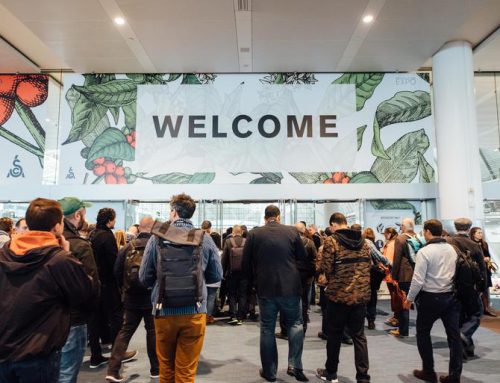The taste of Indonesian coffee evokes unmistakably rich and intense flavor experiences that are distinctive to this historically significant coffee region. The traditional Giling Basah, or wet-hulled, coffee process is a big part of Indonesian green coffee flavor profiles. However, innovative farmers are trying new things. They are adopting new production methods, aiming to diversify and introduce more options for Indonesian coffee lovers.
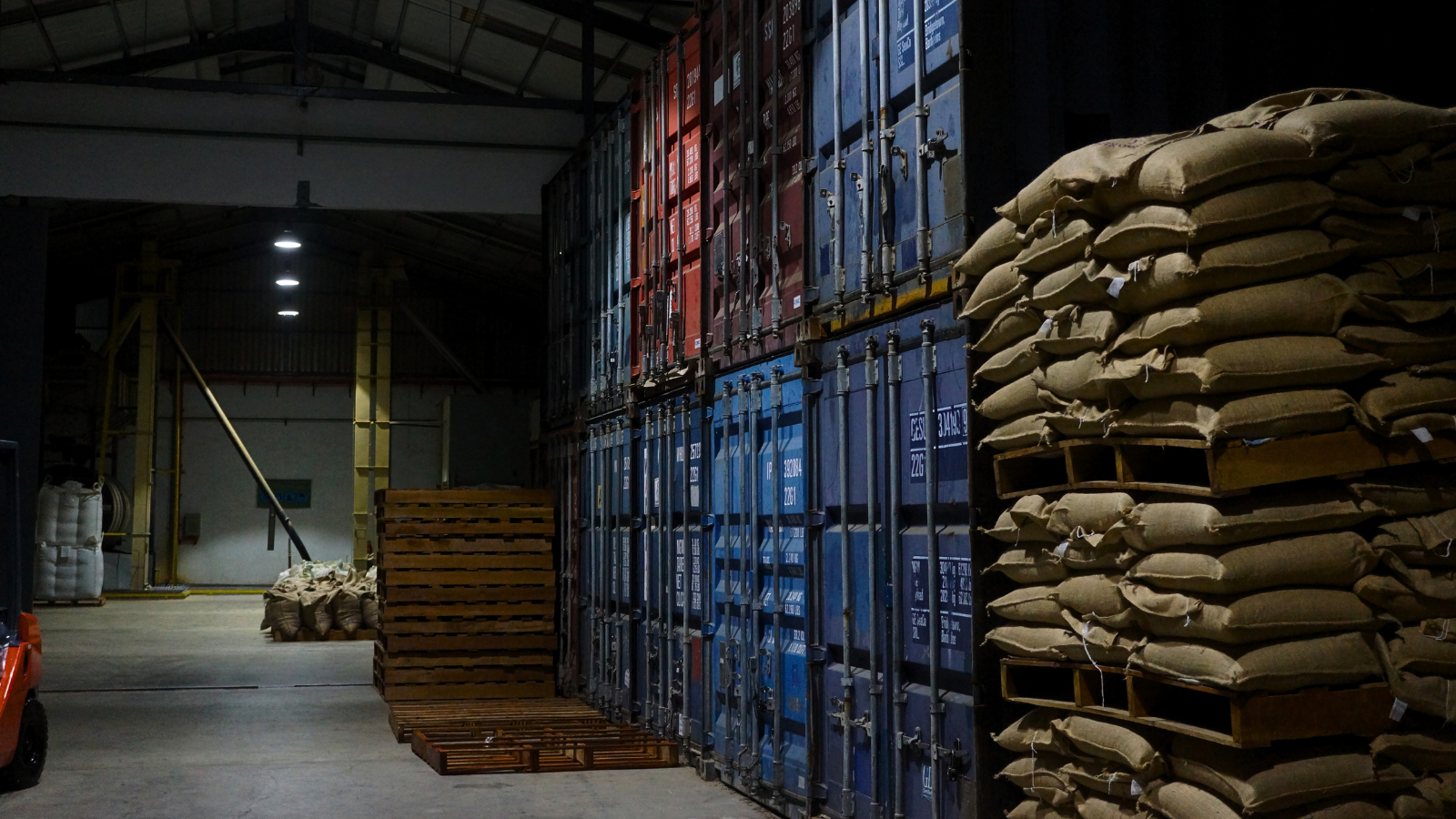
Indonesian coffee warehouse
Indonesian Coffee History
The coffee industry in Indonesia has a 400-year-old history. It began as a venture in the 1600s by Dutch colonialists who sent seeds from Yemen via India for cultivation in Batavia, or modern-day Jakarta. By the early 1700s, Dutch traders were exporting coffee grown in Java (the Indonesian island) to Europe. This put Indonesia on the map as the first viable origin outside of the Arabian Peninsula for commercial coffee production.
Coffee from Indonesia was a luxury item in 1800s Europe. Prices per kilogram were high, equivalent to several hundred dollars in the money of today. By the end of the century, prices dropped to a standard that was affordable to the general population.
The Dutch colonial government enforced coffee farming in Indonesia through the Cultivation System from 1830 to 1870. The policy required locals to pay land taxes with export crops. The reallocation of so much agricultural production towards commodities like coffee, tobacco, and rubber eventually led to famine in the 1840s. Farmers simply could not produce enough food crops alongside commodity crops. After the system was abolished, a free market was established, and Brazil soon after eclipsed the market dominance of Indonesian coffee.
Indonesia gained independence from the Dutch in 1945. The Dutch-owned coffee plantations were soon nationalized in the aftermath. Today, around 90% of Indonesia’s coffee volume is produced by smallholders instead of large estates.
Indonesia Coffee Production
At first, all the coffee grown in Indonesia was Arabica, but after a leaf rust outbreak in the 1860s changed all that. Many plantations switched over to the disease-resistant Robusta species. Today, Robusta makes up over 88% of Indonesia’s output. The country’s large production volume sets its rank as the fourth biggest coffee producer in the world.
The USDA forecasts an 18% decline in Robusta production for the 2023/2024 harvest. The report expects excessive rainfall to hindered cherry development. Meanwhile, Arabica production is expected to be mostly stable. Crop yields of Arabica should be comparatively higher than Robusta due to better inputs and quality management.
Sumatran coffee dominates Indonesia. The island of Sumatra produces between 60-70% of Indonesian green coffee. Other main production areas include: Java, Sulawesi, Bali, and other small islands. Robusta dominates crops in Southern Sumatra and low-elevation land in Java. However, Arabica shines in the highlands of Northern Sumatra and the Javanese mountains.
The average Indonesian coffee farm is small, averaging between 1-5 hectares. Additionally, farmers often intercrop coffee with vegetables, fruits, and spices. Most of the farms are hard to reach, and coffee must travel through collectors, processors, and traders before it reaches exporters. The long supply chain and the need for prompt payments, led to Indonesia’s distinctive wet-hulled processing method.
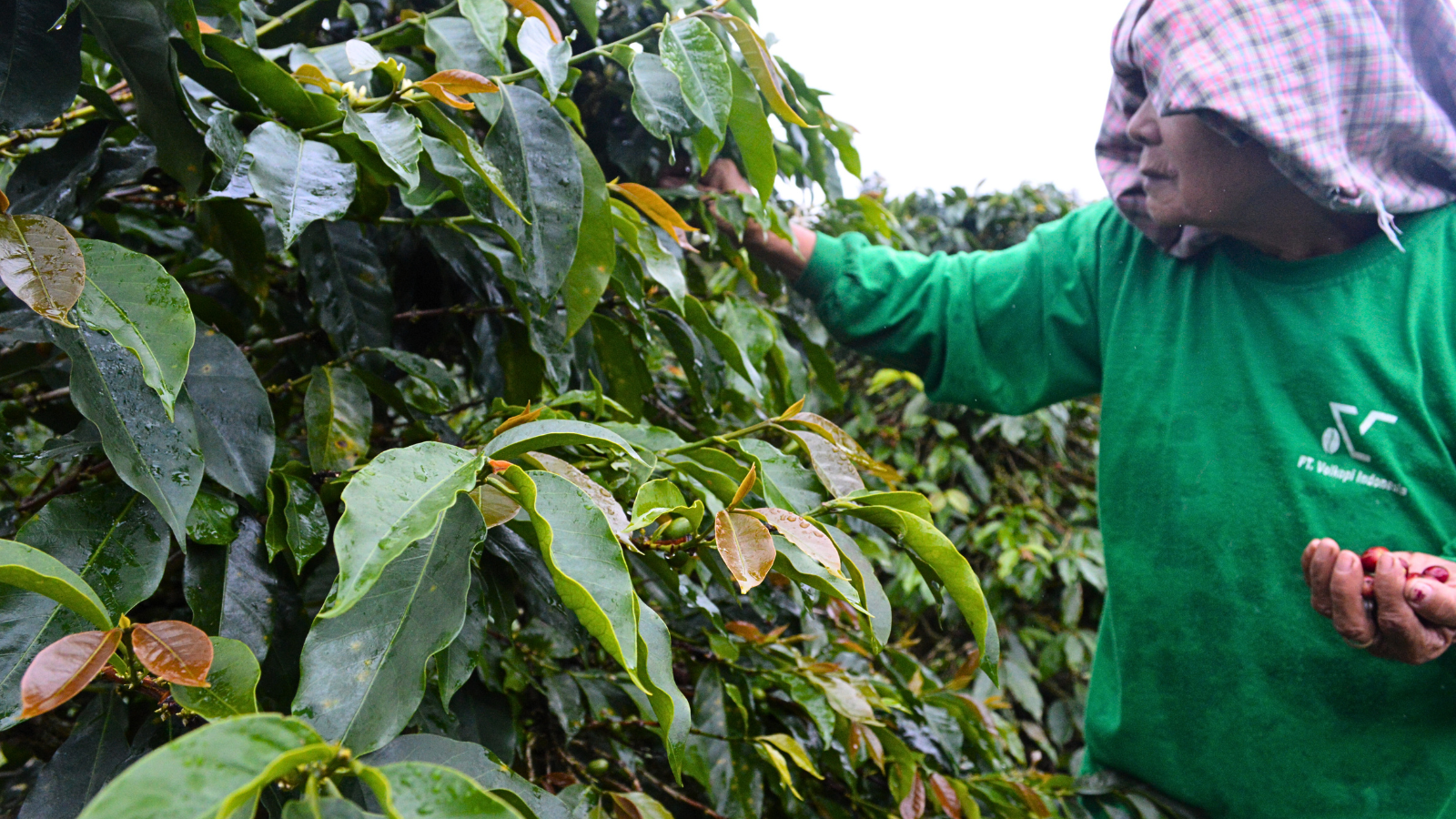
Indonesian coffee farmer picking ripe red coffee cherries in Sumatra
Wet-hulled Coffee Processing (Giling Basah)
The wet-hulled coffee process, aka Giling Basah, contributes to the unique character of Indonesian green coffee. In Indonesia, the wet-hulled process usually begins at the farm-level with a smallholder depulping the coffee cherry to remove the skin. Then, the coffee is fermented overnight to break down the mucilage. The next morning, the coffee is washed and dried to ~50% moisture content. At this point, farmers typically sell the parchment coffee to an intermediary. Speed is of the essence here. Farmers lack the facilities to adequately dry the coffee, so before Indonesia’s humid climate negatively impacts the coffee, they want to get paid for their crops.
The coffee parchment is further dried as it makes its way through the supply chain to a mill to be hulled. At the mill, the parchment is stripped away from the bean and then dried until it reaches 10% – 12% moisture content. At this point, the dried coffee is sorted by machines and by hand to attain a desired quality standard.
Indonesia’s humid climate and lack of consistent sunshine makes it difficult to rely on other processing methods. However, enterprising farmers are stretching out beyond the wet-hulled process. Natural process coffees and other esoteric offerings are being brought to market.
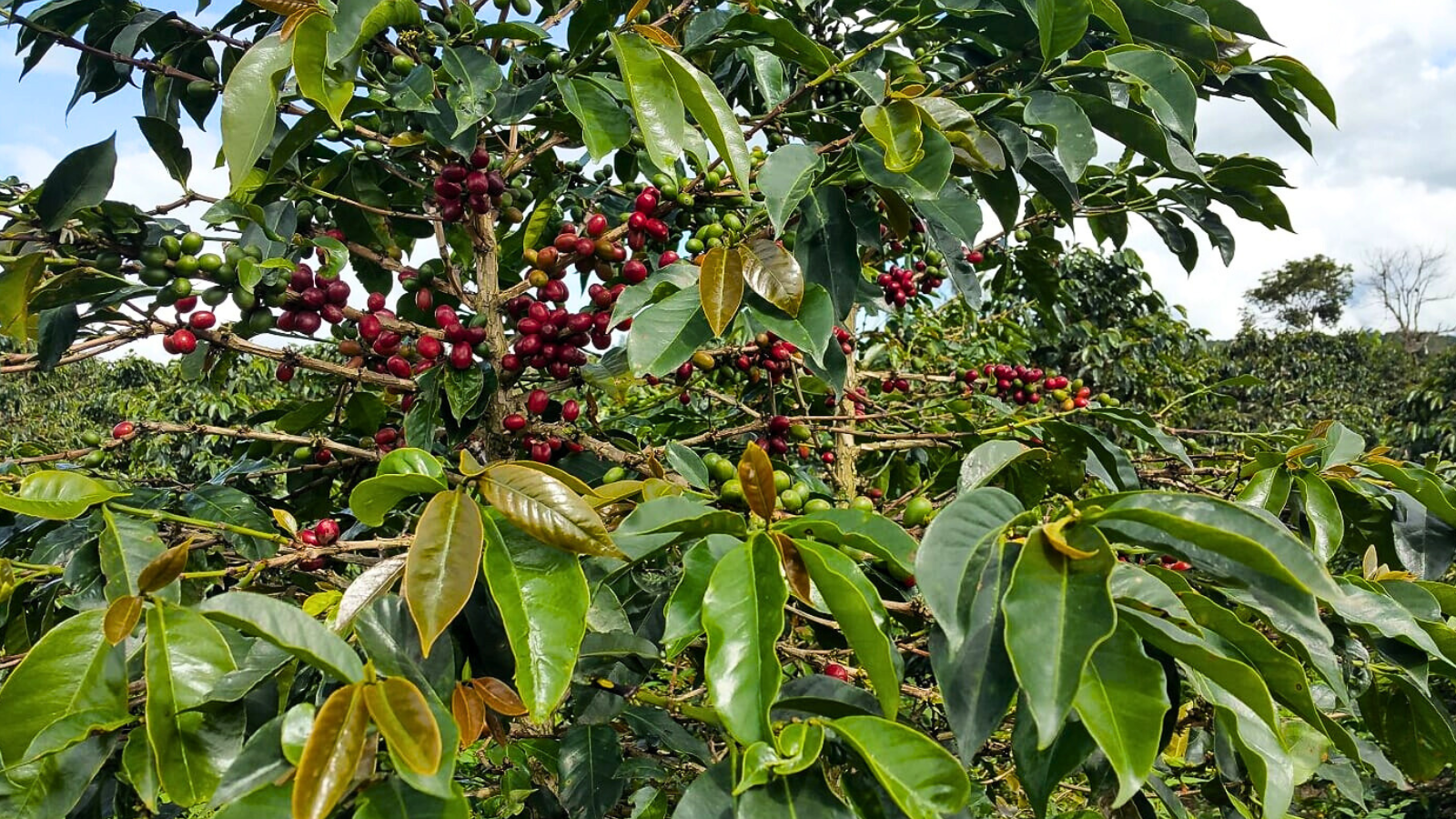
Coffee cherries in Indonesia
Common Indonesian Green Coffee Varietals
Back in the 16th century, the Dutch introduced the Typica variety to Indonesia. While most of the original strain was lost in the leaf rust epidemic, some trees in Sumatra can still trace their roots to the colonial era.
The Timor Hybrid, sometimes locally referred to as “Tim Tim,” is a natural cross between Arabica and Robusta that originated on the island of Timor. Ateng is a commonly grown local variant with a lineage that hails back to the Timor Hybrid.
The common Indonesian S-795 cultivar, also known as Jember, is one of the earliest varietals to resist leaf rust. It’s also known for having sweet, sugary-tasting notes.
In Indonesia, common varietals that stem from Ethiopian lines are often referred to as Abyssinia or Rambung. Similarly, Catuai lines are locally called Kartika, while Catimor descendants are called Adungsari.
Although Kopi Luwak is not a coffee varietal itself, it’s worth mentioning that Indonesia is the source of one of the most expensive coffees in the world. The civet cat poop coffee industry, often prone to fraud and animal abuse, brought Indonesia into the coffee limelight again in the early 2000s with this novelty offering.
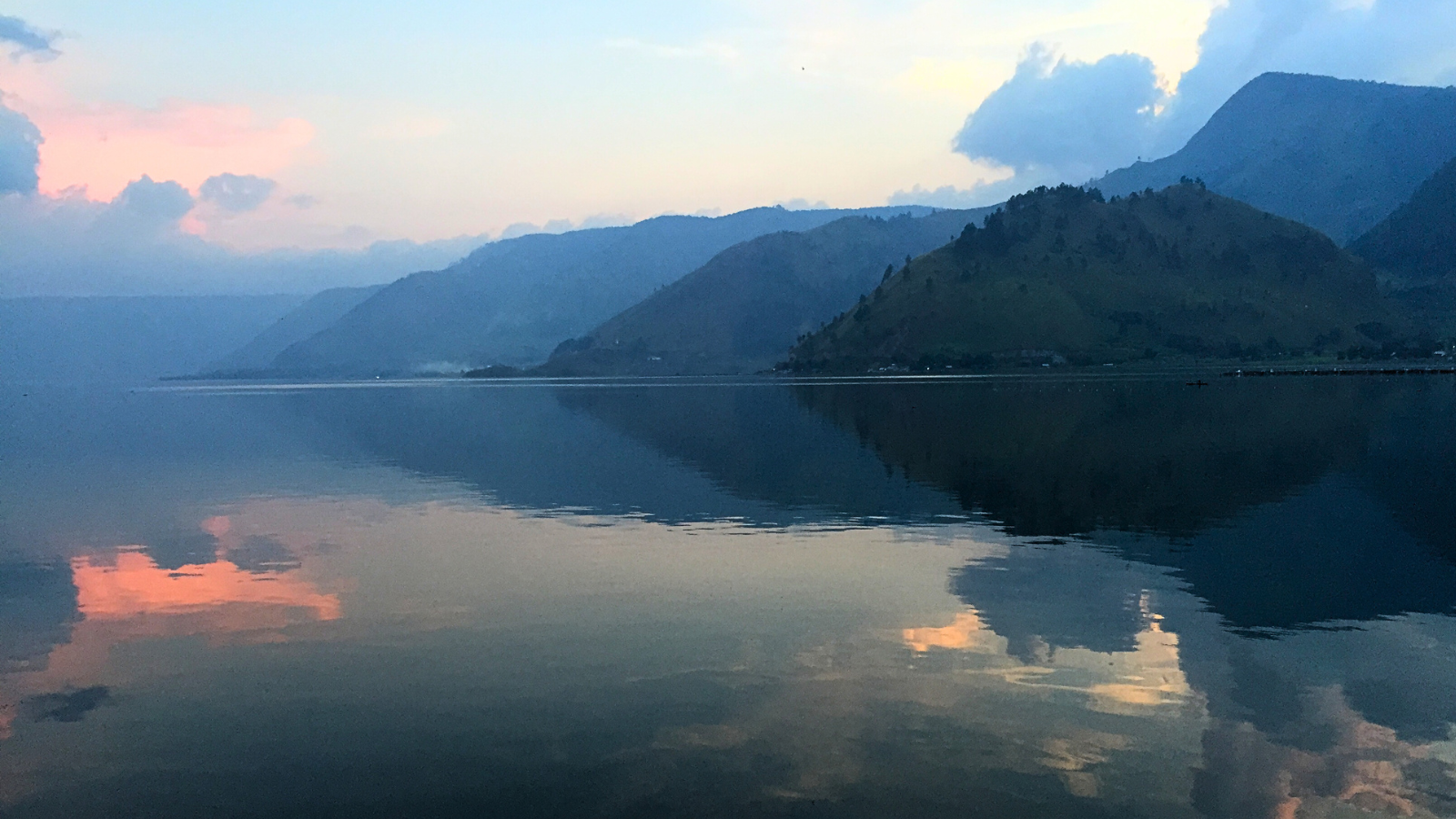
Indonesia is a collection of islands, several of which produce coffee
Indonesian Coffee Producing Regions
The key Indonesian green coffee regions are Aceh, North Sumatra, South Sulawesi, West Java, Bali, and Flores. Green coffee from Java is exceptionally well-known for its role in disseminating Indonesian coffee production throughout the archipelago. In contrast to the long history of coffee from regions like Sulawesi and Sumatra, green coffee from Bali – a relatively newer coffee region in Indonesia – mainly produces small-batch, limited-scale coffee quantities.
Java green coffee famously commanded a rich premium as an essential component of the “Mocha Java” blend. Coffee roasters all over the world adopted the combination of Mocha coffee from Yemen with Java Arabica coffee. Java green coffee is often credited with a rustic flavor profile with sweet and spicy notes. Most Javanese coffee grows at 1,400masl on large estates rooted in the colonial period.
Indonesia’s large, westernmost island of Sumatra is home to a wide range of tropical flora, fauna, and microclimates. Farms on Sumatra are typically 0.5 to 2.5 hectares and scattered across remote regions. They are connected by a network of collectors, processors, traders, and exporters that together push the coffee into the global supply chain.
The heart of Sulawesi coffee production is in the highlands of Tana Toraja. Smallholder farmers dot the region’s mountainous slopes that reach elevations of 2,000masl. The soil is mildly acidic, and temperatures fluctuate greatly between day and night, with a wet and humid microclimate. Much of the coffee is grown in the wild, conveniently planted wherever trees can fit. Sulawesi coffee’s are distinguished by their full-bodied richness and earthiness.
Although citrus was once the main crop, Bali’s rich volcanic soil and high altitudes was a natural fit for coffee production. Bali green coffee beans are known for their clean cup, mild intensity and full body. Unlike other islands in Indonesia, coffee was introduced to Bali only recently by way of traders from Lombok. Almost all Balinese coffee is exported to Japan.
Flores is a small island, it’s a promising region for quality-centric Indonesian green coffee. Elevations run low, with the highest peak at 1,736masl, and the coffee character resembles Java, with the potential for clean, sweet cups with a syrupy body.

Indonesian coffee farmer raking coffee
Quality Standards for Indonesian Green Coffee
Green coffee from Indonesia is classified into different grades depending on the number of defects in a sample. The highest grade is Grade 1 Triple-Picked. This signifies that the coffee was picked over or hand-sorted three times. The designation signifies that less than five defects can be found in a 300 gram sample. Similarly, Grade 1 DP (double-picked) signifies that less than nine defects can be found. For a Grade 1 Indonesia green coffee without a TP or DP mark, less than 11 defects should be found per sample. The grading system spans grades 1 through 6.
What does Indonesian Coffee taste like?
With over 17,000 islands and an expansive coffee history, Indonesian coffee provides roasters with an array of profiles and characteristics. Indonesian coffee, particularly from Java or Sumatra, can be counted on for low acidity, earthy, dark chocolate notes, and a full body that finishes with a long-lasting aftertaste. On the other hand, coffee from newer regions such as Bali can be quite different. Roasters should look for expressions of complex floral, citrus and chocolate notes.
Learn more about unroasted coffee from Indonesia at Genuine Origin’s Indonesia portfolio at https://www.genuineorigin.com/indonesia.




